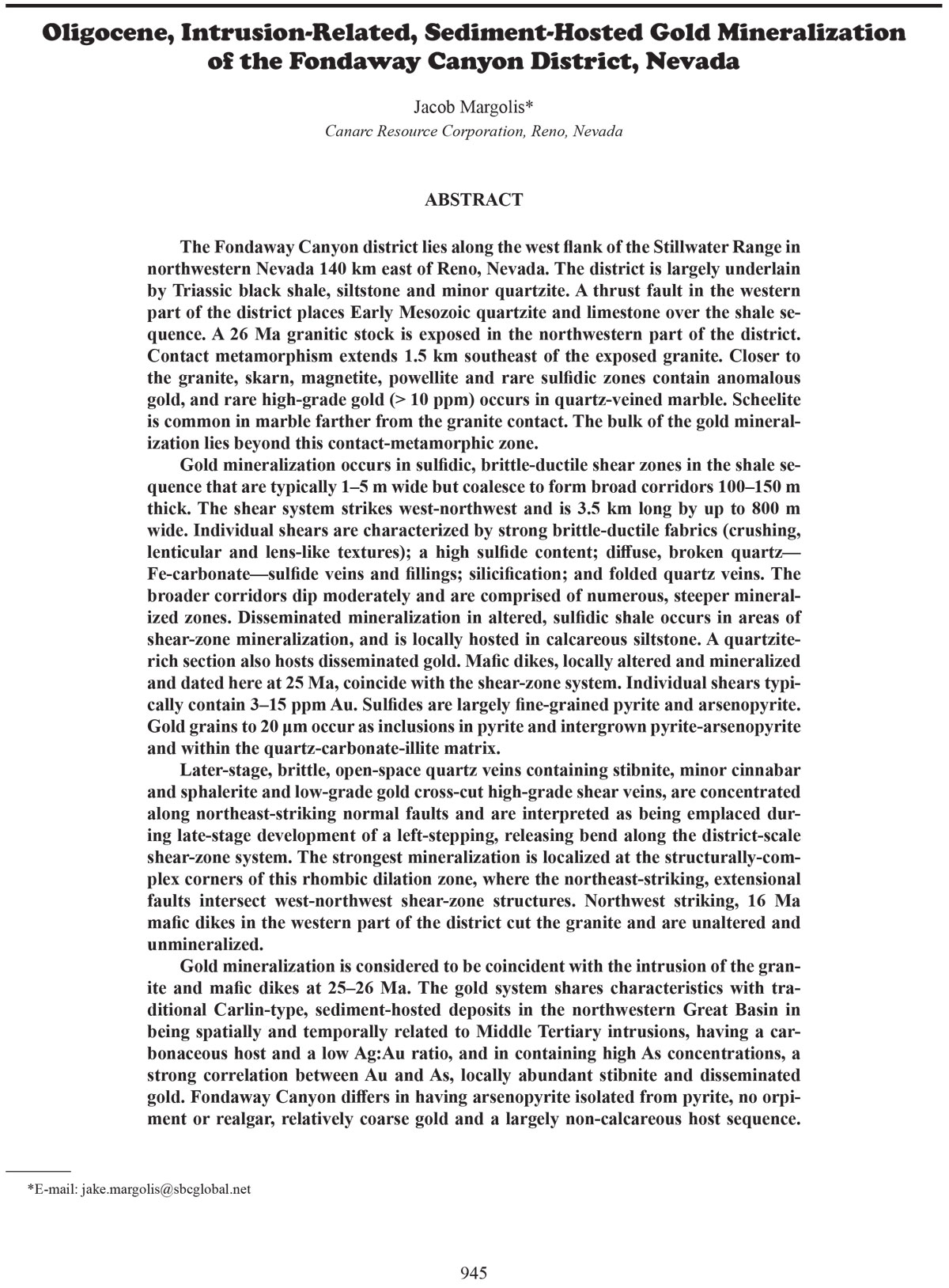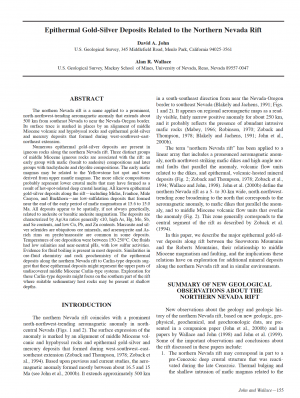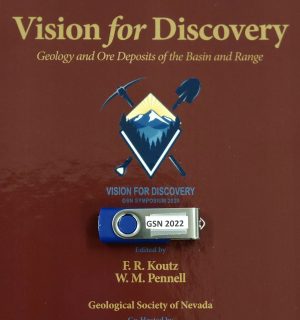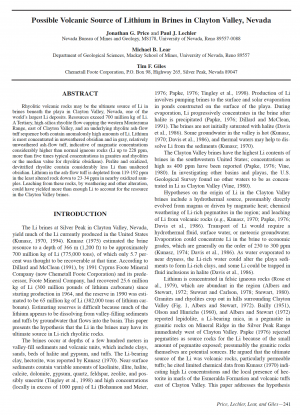Description
The Fondaway Canyon district lies along the west flank of the Stillwater Range in
northwestern Nevada 140 km east of Reno, Nevada. The district is largely underlain
by Triassic black shale, siltstone and minor quartzite. A thrust fault in the western
part of the district places Early Mesozoic quartzite and limestone over the shale sequence. A 26 Ma granitic stock is exposed in the northwestern part of the district.
Contact metamorphism extends 1.5 km southeast of the exposed granite. Closer to
the granite, skarn, magnetite, powellite and rare sulfidic zones contain anomalous
gold, and rare high-grade gold (> 10 ppm) occurs in quartz-veined marble. Scheelite
is common in marble farther from the granite contact. The bulk of the gold mineralization lies beyond this contact-metamorphic zone.
Gold mineralization occurs in sulfidic, brittle-ductile shear zones in the shale sequence that are typically 1–5 m wide but coalesce to form broad corridors 100–150 m
thick. The shear system strikes west-northwest and is 3.5 km long by up to 800 m
wide. Individual shears are characterized by strong brittle-ductile fabrics (crushing,
lenticular and lens-like textures); a high sulfide content; diffuse, broken quartz—
Fe-carbonate—sulfide veins and fillings; silicification; and folded quartz veins. The
broader corridors dip moderately and are comprised of numerous, steeper mineralized zones. Disseminated mineralization in altered, sulfidic shale occurs in areas of
shear-zone mineralization, and is locally hosted in calcareous siltstone. A quartziterich section also hosts disseminated gold. Mafic dikes, locally altered and mineralized
and dated here at 25 Ma, coincide with the shear-zone system. Individual shears typically contain 3–15 ppm Au. Sulfides are largely fine-grained pyrite and arsenopyrite.
Gold grains to 20 μm occur as inclusions in pyrite and intergrown pyrite-arsenopyrite
and within the quartz-carbonate-illite matrix.
Later-stage, brittle, open-space quartz veins containing stibnite, minor cinnabar
and sphalerite and low-grade gold cross-cut high-grade shear veins, are concentrated
along northeast-striking normal faults and are interpreted as being emplaced during late-stage development of a left-stepping, releasing bend along the district-scale
shear-zone system. The strongest mineralization is localized at the structurally-complex corners of this rhombic dilation zone, where the northeast-striking, extensional
faults intersect west-northwest shear-zone structures. Northwest striking, 16 Ma
mafic dikes in the western part of the district cut the granite and are unaltered and
unmineralized.
Gold mineralization is considered to be coincident with the intrusion of the granite and mafic dikes at 25–26 Ma. The gold system shares characteristics with traditional Carlin-type, sediment-hosted deposits in the northwestern Great Basin in
being spatially and temporally related to Middle Tertiary intrusions, having a carbonaceous host and a low Ag:Au ratio, and in containing high As concentrations, a
strong correlation between Au and As, locally abundant stibnite and disseminated
gold. Fondaway Canyon differs in having arsenopyrite isolated from pyrite, no orpiment or realgar, relatively coarse gold and a largely non-calcareous host sequence. The gold setting in the outer parts of the contact-metamorphic halo of the granite
stock places Fondaway Canyon in the relatively-deeper, “distal”, intrusion-related
sediment-hosted gold environment envisioned for certain Carlin-type deposits.
Open-pit, heap-leach production of 8,000 ounces of gold between 1977 and 1990
was restricted to shallow oxidized mineralization. A resource estimate of deeper sulfidic zones completed in 2017 is 1.069 million ounces of gold in 5.25 million tons grading 6.32 ppm Au.





